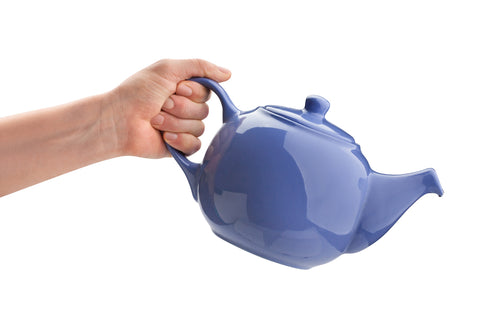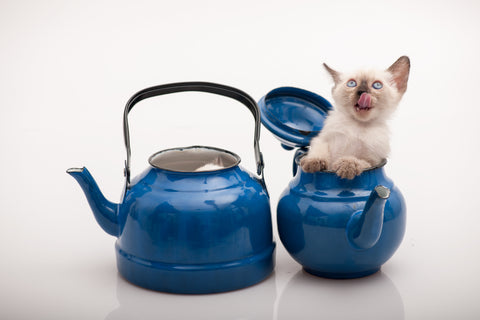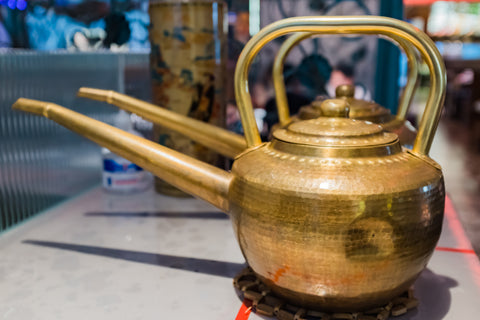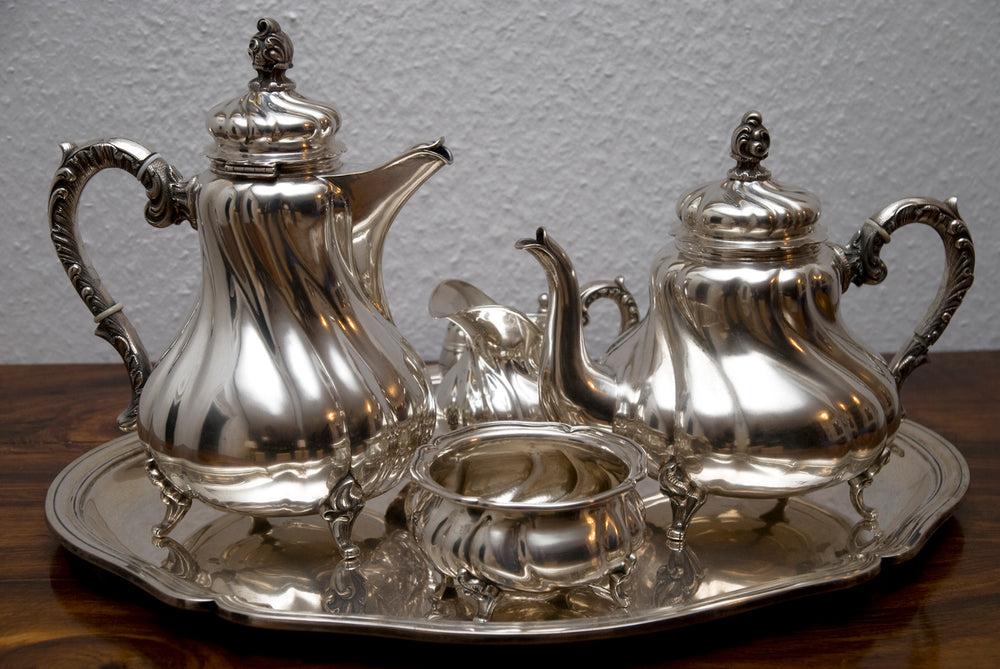Tea and pottery have a very special connection. The make of the teapot determines how well the tea leaves are brewed in them. Tea and teapots are connected, and their union ensures a perfect cuppa. Teapots are carefully crafted by potters to help enhance the aroma and the flavours of the tea, ensuring a wonderful tea-drinking experience. From the material used in making the teapot to perfectly shaping its spout – everything is meticulously thought out.
The British love their cup of tea – it is a part of their daily ritual, and since they prefer sipping tea several times during the day, they like to have a good quality teapot in their kitchen that keeps their tea warm. Let us understand the parts of a British teapot.
Understanding the Parts of a Teapot

Handle
The handle is probably the most crucial component of the teapot since it would be quite challenging to handle the teapot without it. A well-constructed handle allows one to operate the teapot easily. If you are an antique lover or teapot collector, you know that the handle is the part that shows the most wear. It shows that it has been used several times or the number of hands it has gone through. Since the handles are parts that you would be using to pour the tea, they should be made from materials that are poor conductors of heat. Some acceptable materials include a cane, bamboo, reed, black bamboo, white oak, honeysuckle, Akebia vine, elm bark, leather, driftwood, etc. These materials can be used to wrap the handles or be used as a core handle.
Thumbpiece

The thumbpiece is at the top of or on top of the handle of a teapot. It supports your thumb, allows a firm hold, and gives you greater control over how much tea you need to pour into your cup.
Sockets
The sockets are two small pins that help connect the handle to the teapot – they keep the handle sturdy and in place.
Foot

Like humans, the foot of a teapot helps it keep steady. The British are quite fond of creating beautiful styles and shapes of foot in a teapot. Some common types of foot that you may see in a British teapot are:
- Ball-style feet – Ball-style feet in teapots will have feet that are in the shape of a sphere.
- Circular foot – This is a continuous foot that goes around the base of the teapot in a circular shape. It is a sort of extension that helps the round bottom of a teapot stand upright.
- Bun-style feet – As the name sounds, bun-style feet in teapots will be flat and spherical in shape.
- Hoof style feet – This type of feet resemble the hooves of an animal.
- Bracket style feet – This is a single foot that is connected with the help of a cohesive piece of cross.
Body
The body is the part that holds the contents to make tea—the hollow part of the teapot where the hot water and tea leaves are left to brew. However, many people also prefer to store hot water in the teapot and pour it directly over a teabag in their cup. The volume, form, and size of the body will be different for every teapot. Octagon, circular, and bell-shaped are some common forms of body in a teapot.
Spout

The spout is the part through which the tea is guided and poured. Most antique teapots came with strainers(in-built) that were at the point where the body was connected to the spout. Spout also comes in different shapes and designs:
- Straight Spout - The straight teapot spout is the most widely used kind. This straightforward tapered spout is useful for pouring tea smoothly and precisely. Straight spouts are mostly seen in teapots made from silver.
- Fluted Spout – The design of a fluted spout was made because of aesthetic reasons. It has vertical grooves along the length of the body of teapot. This design is a part of the Queen Anne Style.
- Panel Spout – This type of spout has a paneled or faceted look all the way up. This allows a swan neck or straight spout to appear differently without changing the piece's main design.
- Bamboo Spout - Drawing inspiration from bamboo stalks, this organic-looking spout can give a teapot the touch of classic Chinoiserie charm or cultural significance. The spout type is cylindrical in shape and usually has ridges resembling bamboo shoots tapering upwards.
- Figural Spout – Although figural spout is not a type of spout, it is a general term that can be used for spouts that are crafted in various designs of animals or creatures. Dragon, snake, elephant trunk, camel, etc., are some common animal designs that were commonly used in making spouts of teapots. Such designs are available today also. The design of the spout was matched with the entire teapot.
Cover
The cover is located at the top of the body. When removed, it gives you access to the body of the teapot. Back in the days when teapots were just being introduced, the covers came hinged to them, but modern-day teapots are seen with removable covers.
Shoulders
The shoulder is the part where the cover rests, and sometimes, they are embellished, or they can be crafted with beautiful designs.
Finial
The finial in a teapot is also known as a knop. It is quite inconspicuous and a part of the cover – the centre mainly. It allows you to lift the cover easily. They are generally made from wood, silver, or ivory. While some craftsmen make it in a simple form, many like to flaunt their craftsmanship by designing it in the form of a figure, flower, bird, animal, or fruit.
Tea and teapots are deeply embedded in the British culture. While the culture of drinking tea continues even today, the teapots continue to evolve according to the taste of modern man.


 Easter 2026
Easter 2026
 Frozen Food
Frozen Food
 Baking
Baking
 Beans, Peas, Soups & Tins
Beans, Peas, Soups & Tins
 Biscuits, Crackers & Cookies
Biscuits, Crackers & Cookies
 Candy / Sweets
Candy / Sweets
 Crisps & Snacks
Crisps & Snacks
 Chemist / Pharmacy
Chemist / Pharmacy
 Desserts
Desserts
 Gravy, Stock & Paste
Gravy, Stock & Paste
 Haggis
Haggis
 Indian Sauces, Paste and Pickle
Indian Sauces, Paste and Pickle
 Jams & Preserves
Jams & Preserves
 Poppy Appeal
Poppy Appeal
 Pot Noodles & Super Noodles
Pot Noodles & Super Noodles
 Scone Mix
Scone Mix
 Gluten-Free / Free From
Gluten-Free / Free From
 Tea Accessories
Tea Accessories
 Teapot & Tea sets
Teapot & Tea sets
 Tea For One
Tea For One
 Sugar & Creamer
Sugar & Creamer
 Tableware
Tableware
 Serveware
Serveware
 Plates & Trays
Plates & Trays
 Bowls
Bowls
 Cups & Saucers
Cups & Saucers
 Mugs
Mugs
 Silverware
Silverware
 Dinnerware - Accessories
Dinnerware - Accessories
 Dinnerware - For Pets
Dinnerware - For Pets
 Victoria Eggs - Hand-Drawn UK Homeware
Victoria Eggs - Hand-Drawn UK Homeware
 Jewelry & Accessories
Jewelry & Accessories
 Sale
Sale
 Christmas Gifts
Christmas Gifts

